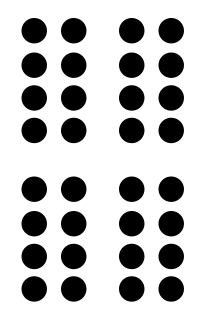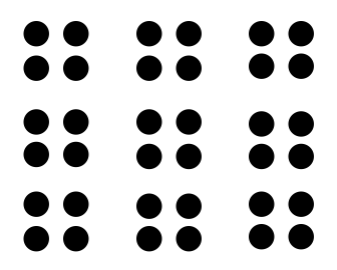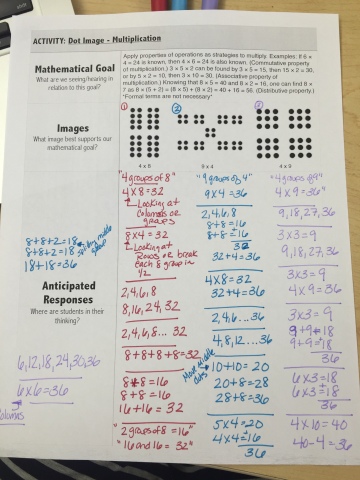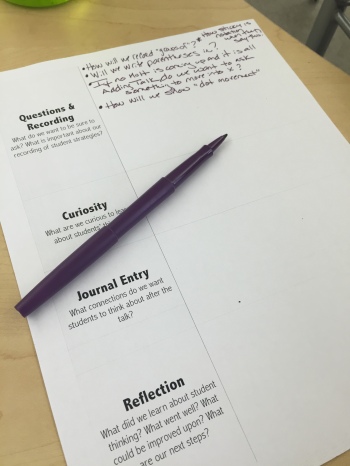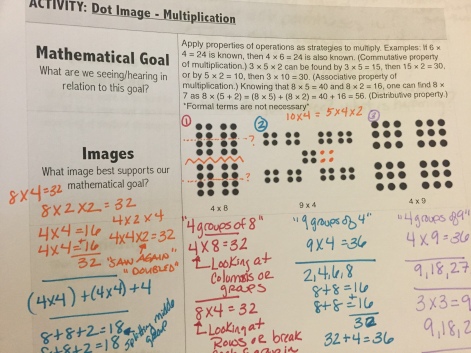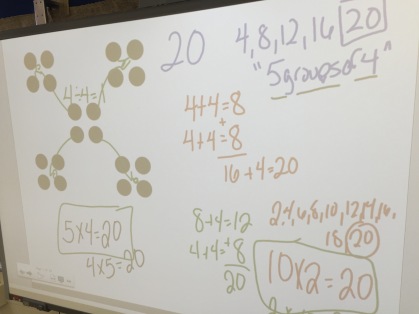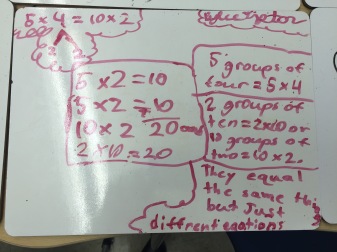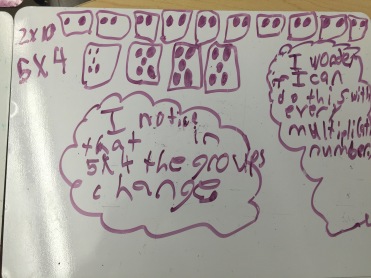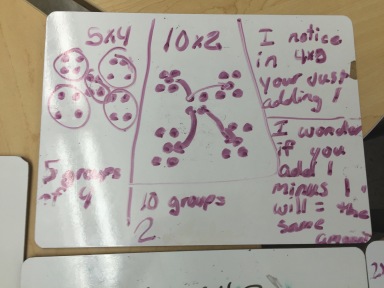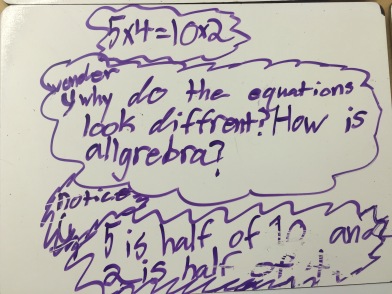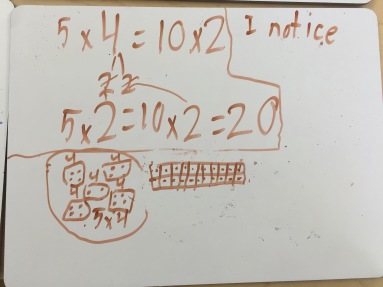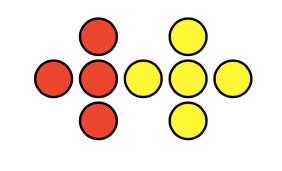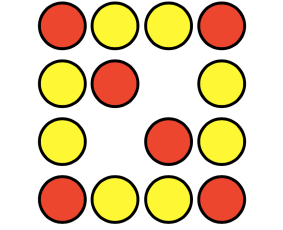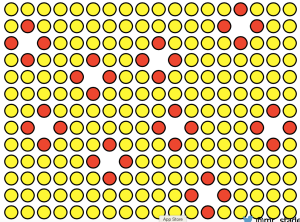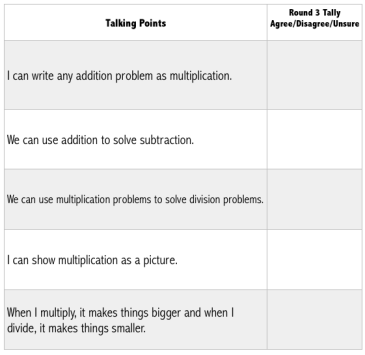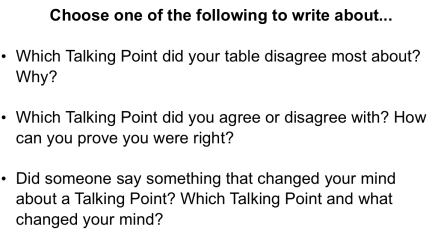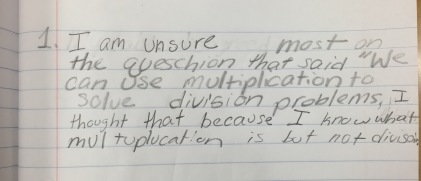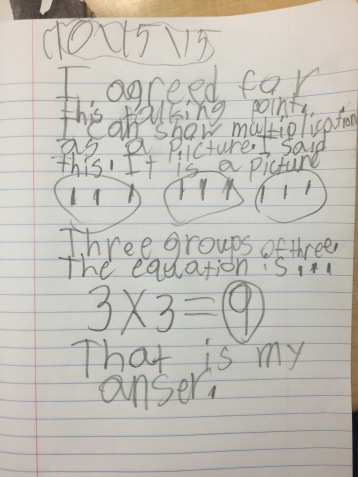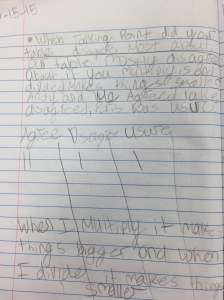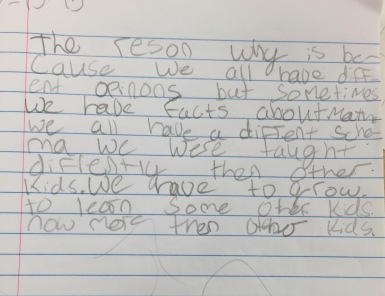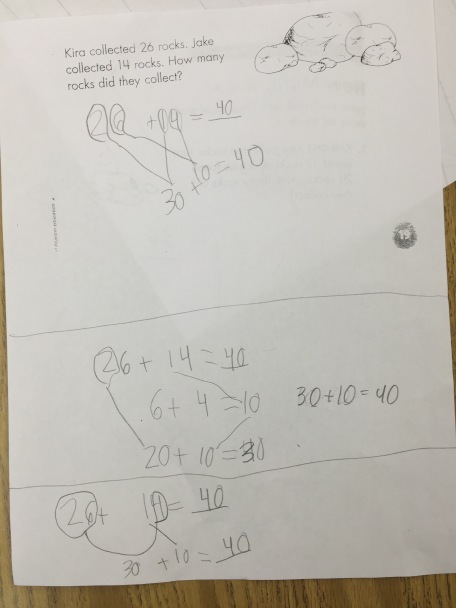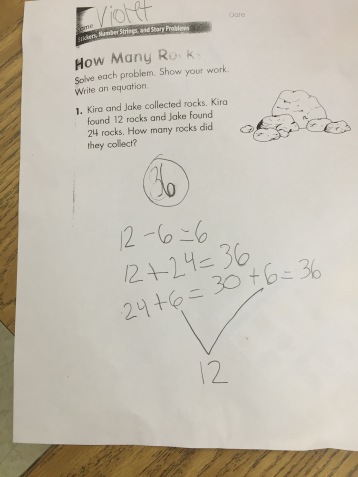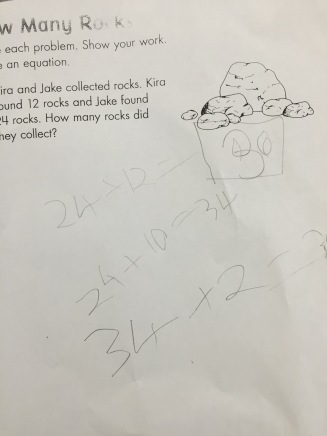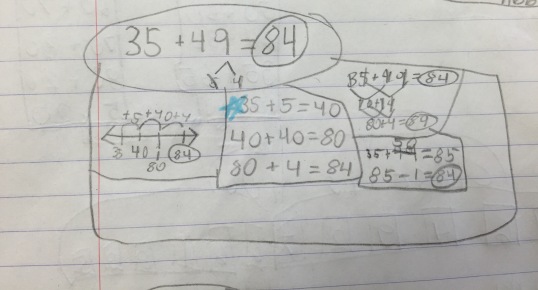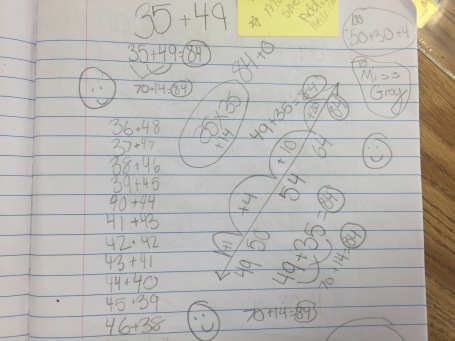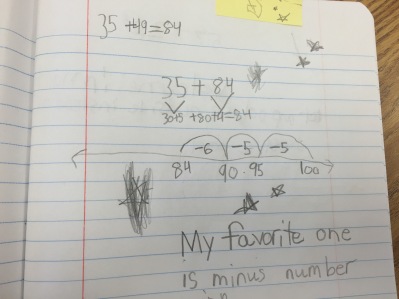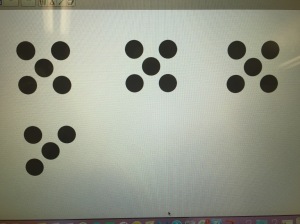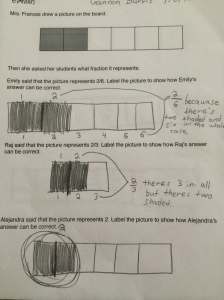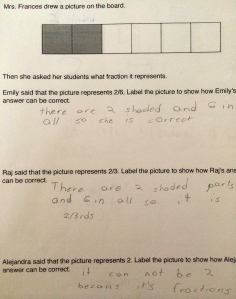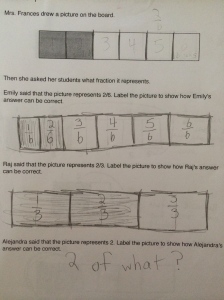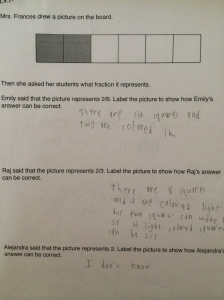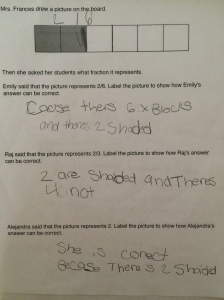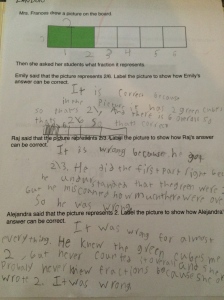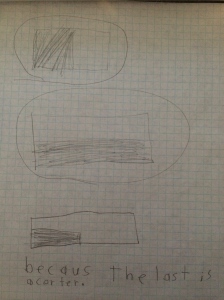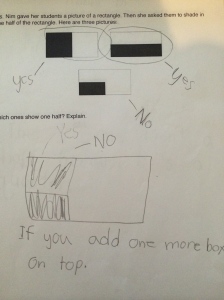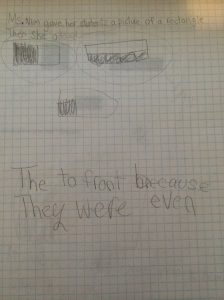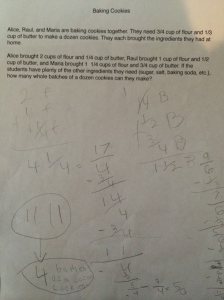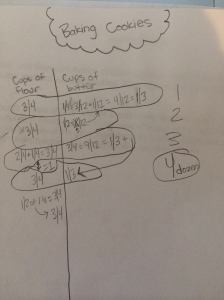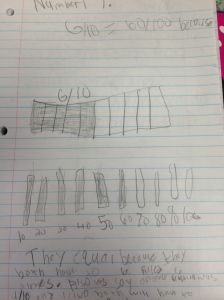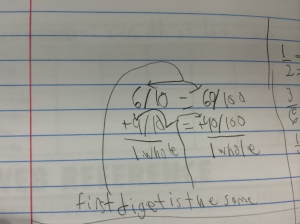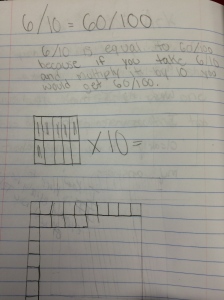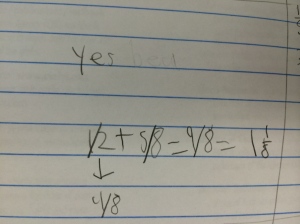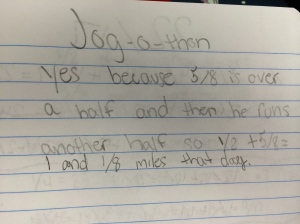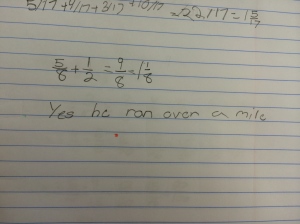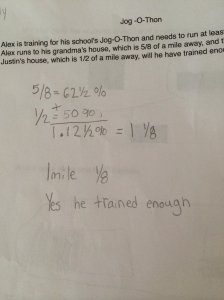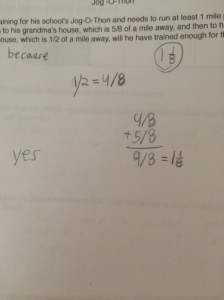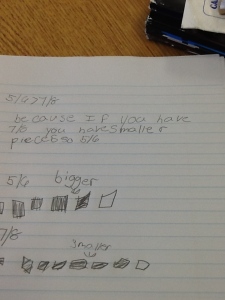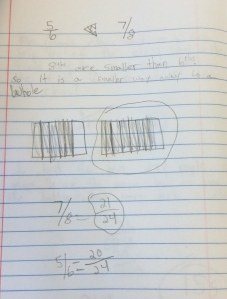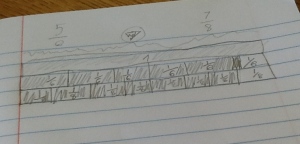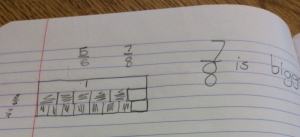The third grade team is planning for a dot image number talk that focuses on this standard:
“Apply properties of operations as strategies to multiply and divide.2Examples: If 6 × 4 = 24 is known, then 4 × 6 = 24 is also known. (Commutative property of multiplication.) 3 × 5 × 2 can be found by 3 × 5 = 15, then 15 × 2 = 30, or by 5 × 2 = 10, then 3 × 10 = 30. (Associative property of multiplication.) Knowing that 8 × 5 = 40 and 8 × 2 = 16, one can find 8 × 7 as 8 × (5 + 2) = (8 × 5) + (8 × 2) = 40 + 16 = 56. (Distributive property.)”
Before this talk the students have been doing work with equal groups and are moving into array work with the arranging chairs activity in Investigations. They have also been doing dot images with smaller groups and have noticed the commutative property as arranging the same dots into different-sized groups.
These are the three images we are playing around with and anticipating which would would draw out the most interesting strategies based on the properties. We are thinking of having a journal entry afterwards to see if students make any connections between the strategies.
So if you feel like playing around with some dot images and doing some math, I would love anyone’s thoughts on which image you would choose and why!
The start of my planning….
My new thoughts on these images and responses…
After chatting with a few friends yesterday and thinking about which image would elicit the most expressions that could allow students to see some connections between the properties of operations, I am thinking about some changes to the images (in orange).
In image 1, I am wondering if we should split each group of 8 into fours but leave a bigger space between the top four groups and bottom four groups. It may allow students to better see the 4’s and then group them as 8’s and at the same time thinking about “doubling” the top group to get the total because of symmetry. They could then explore ideas like (4 x 4) + (4 x 4) = 4 x 4 x 2 or (4 x 2) x 4 = (4 x 4) x 2 [associative property] or 8 x 4 = (4×4) + (4 x 4) [distributive property] or any fun mix of them. If we leave it as it is, I think it may be hard to move them past 4 x 8, skip counting by 8’s or using 2’s.
In the second image, I love the structure of it but am wondering how students could use that 4 in the middle aside from just adding it on each time? Will we just end up with a lot of expressions with “+4” at the end? I am wondering what would happen if we adding an extra group of four next to it? Would students see the structure of a 5 and double it in some way? (5×4)x2 = 10 x 4 or 5x(2×4)=(5×4)x2 [associative] or 5 x 8 = 10 x 4 [doubling/halving] or 2×4 + 2×4 + 2×4 + 2×4 + 2×4 = 10 x 4
Then what question to pose at the end? Do we ask them to freely choose two expressions and explain how they are equal? or Do we choose the two we want them to compare? Do we have the dot image printed at the top of the page for them to use in their entry?
So much to think about..
~Kristin
